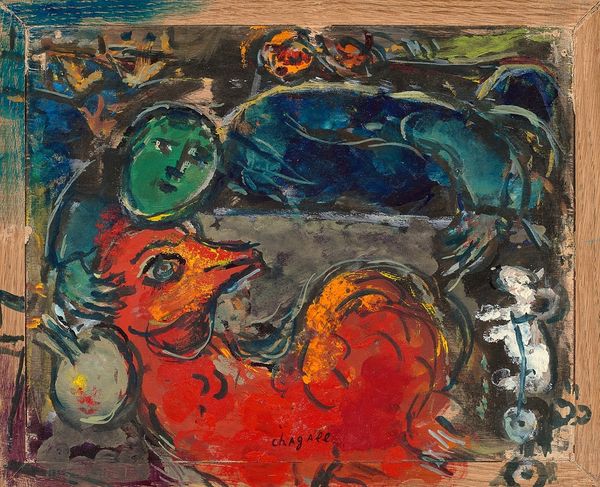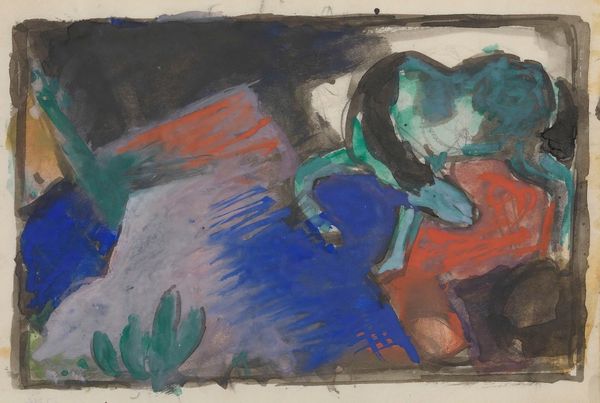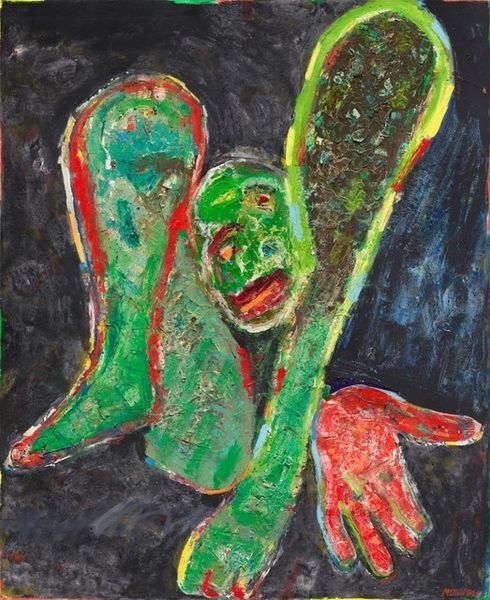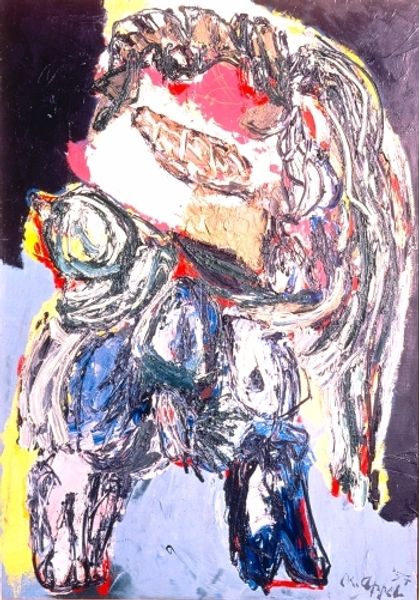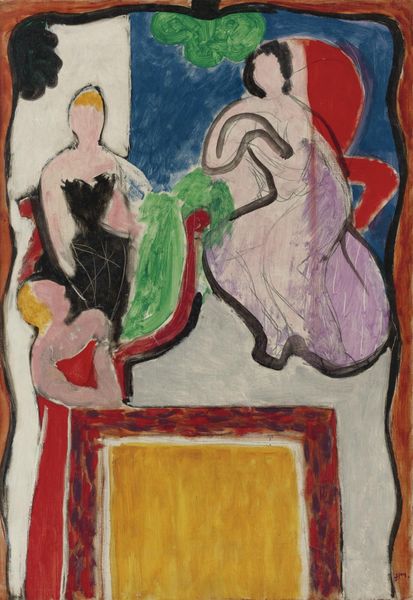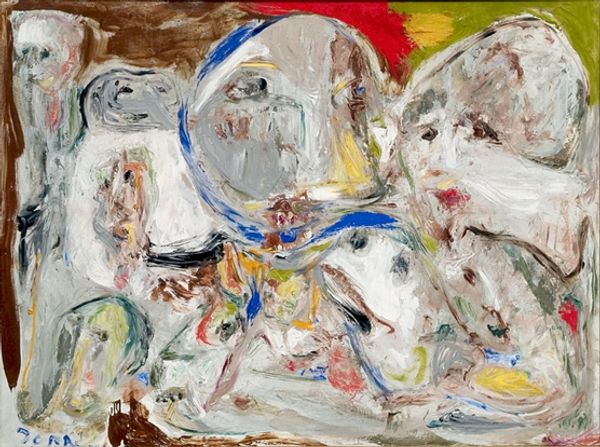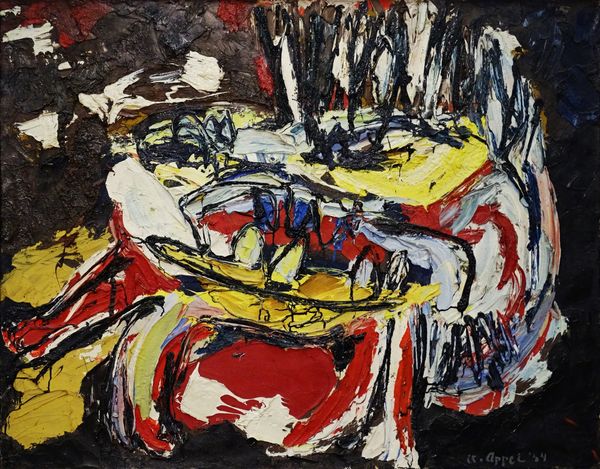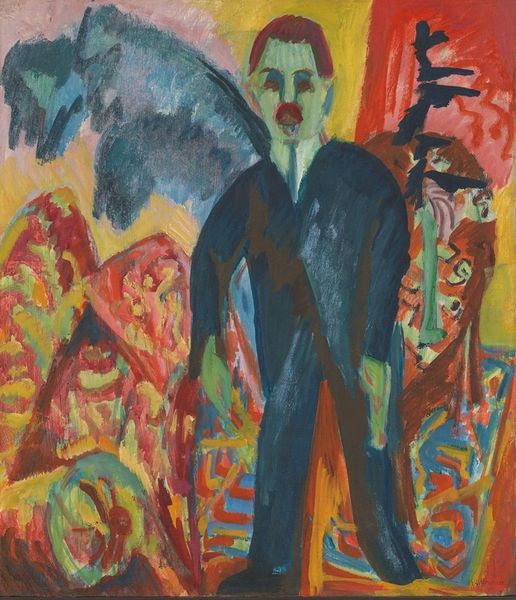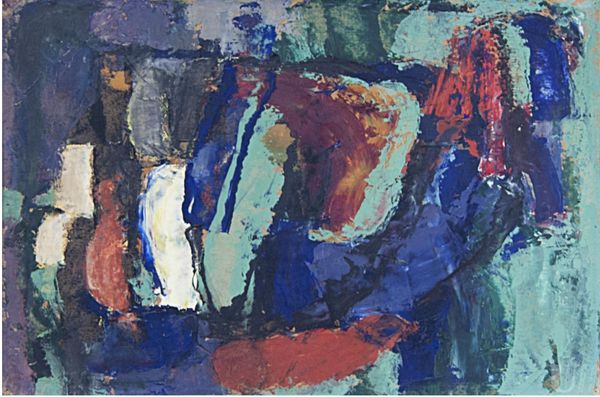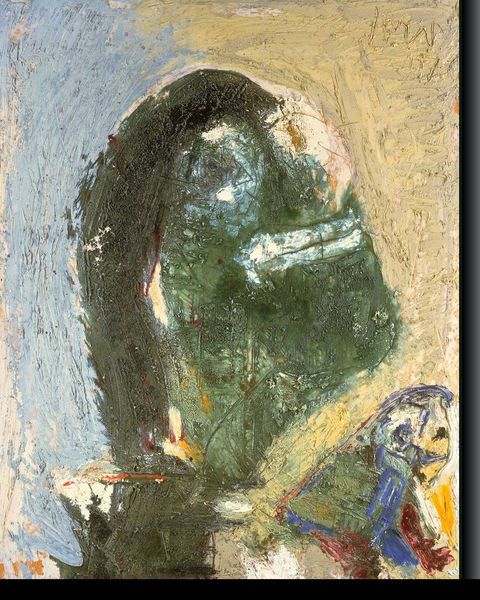
oil-paint
#
abstract-expressionism
#
abstract expressionism
#
cobra
#
narrative-art
#
oil-paint
#
figuration
#
form
#
oil painting
Copyright: Asger Jorn,Fair Use
Editor: This is Asger Jorn's "Composition with Owl and Imaginary Animals" from 1959. It's an oil painting, and the thick, almost crude, application of paint is really striking. It’s hard to ignore the raw materiality of it. What can you tell us about the making of this work? Curator: Well, let’s think about Jorn's context. He's working in post-war Europe. There’s a real rejection of traditional artistic values happening. The materiality—that's crucial. The sheer viscosity of the oil paint, the visible brushstrokes... It's about process being laid bare. It disrupts any notion of the artist as this detached genius. Instead, we see the artist's physical engagement. Editor: So the act of painting itself becomes the subject? How does that tie into the “imaginary animals”? Curator: Exactly. Think about the accessibility of materials post-war. Jorn isn't precious with them. He's slathering them on. The animals, the composition—they’re all products of a specific means of production, an era of rebuilding and re-evaluation. Are these "high art" animals, rendered with skill and finesse? No! They are rough, they are expressive in their very construction. Editor: That makes sense. It’s like the process of making the painting mirrors the process of creating a new world, a new social structure, after the war. Curator: Precisely! It challenges that traditional boundary between "high art" and more basic, visceral forms of making. What do you think about the color palette, for instance? How does the application influence the narrative? Editor: It feels almost like a deliberate rejection of refined aesthetics. The colors clash, but that draws attention to the materiality even more, and maybe even asks viewers to be involved and actively create their own narrative, rather than passively receiving one. Curator: It makes the piece much more intriguing, because of how he played with the idea of artistic labor itself, and challenged its established conventions.
Comments
No comments
Be the first to comment and join the conversation on the ultimate creative platform.
